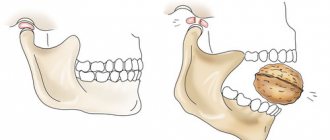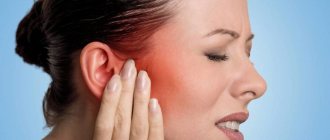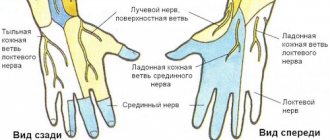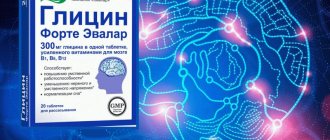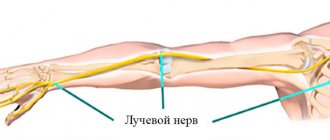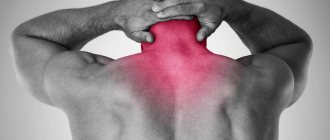Diagnostics
If you have characteristic symptoms, it is recommended to immediately consult a doctor.
A neurologist diagnoses a disease of the facial nerve and selects a treatment method. During the initial visit, the specialist collects information regarding the patient’s feelings. A visual inspection is also carried out. Based on the totality of information, a preliminary diagnosis is made. To confirm it, additional instrumental studies and laboratory tests are prescribed. The patient undergoes a general blood and urine test (blood glucose levels are also checked).
One of the diagnostic techniques is neurological testing. The doctor asks the patient to perform certain facial exercises. Among the main elements that reveal the symptoms characteristic of neuritis:
- blinking, squinting;
- raising the eyebrows, suggesting to frown;
- wide smile, showing teeth;
- puffing out the cheeks, trying to whistle;
- wrinkling of the nose.
By the way the patient performs these elements, it becomes clear how weakened his muscles are, the asymmetry of the muscles is pronounced, and signs of paralysis appear. Additional diagnostics become necessary when concomitant pathologies are suspected. This is relevant in the presence of tumors, brain inflammation, viruses and infections.
Diagnostic measures include:
- electroneuromyography;
- magnetic resonance imaging;
- computed tomography;
- electroencephalogram.
Prevention
It is advisable to perform acupressure massage several times a day, for the purpose of prevention, using an exciting, tonic, stimulating method. In some situations, you should determine for yourself the most necessary, well-proven points and use them individually (Fig. 90).
Rice. 90. For the prevention of acute respiratory diseases
1. YING-XYANG (GI-20) is located at the wing of the nose, at the beginning of the nasolabial fold of the upper lip.
2. YAN-BAI (VB-14) is located above the middle of the eyebrow (YU-YAO point), 1.5 cun upward.
3. REN-YIN (E-9) is located under the jaw, at the level of the upper edge of the thyroid cartilage.
4. TSUAN-ZHU (V-2) is located in the recess of the superciliary arch, at the point of its connection with the bridge of the nose.
5. SY-ZHU-KUN (TR-23) is located in the temporal region of the face, at the junction of the zygomatic bone with the temporal bone.
6. SY-BAI (E-2) is located below the level of the pupil of the eye in the recess of the infraorbital foramen.
7. SHOU-SAN-LI (GI-10) is located on the back side of the upper third of the forearm, 2 cun from the outer skin fold of the elbow joint, formed when the arm is bent at the elbow joint.
8. YIN-TANG (extra-canal) is located in the center of the bridge of the nose, the point is fixed when you move your finger up the back of the nose.
After a person notices signs of the development of the disease, he needs to go to a hospital for consultation, a comprehensive examination and obtain medical prescriptions.
Before making a diagnosis, specialists will have to conduct a number of laboratory and instrumental studies, as well as differentiate the disease from other pathologies that have similar symptoms.
As a rule, patients have to undergo all basic blood and urine tests.
You may also need:
- radiography;
- examination by a dentist;
- computed tomography or magnetic resonance imaging;
- EEG, etc.
Want to know what the cost of hyaluronic acid injections for the face is? Then it will be very useful for you to read the following
information
.
If you are interested in the question of where to buy wax for hair removal at home, then you just need to follow the link and read the article.
People can prevent the occurrence of pathology if they take preventive measures in a timely manner.
It is enough for them to follow the following recommendations of specialists:
- it is necessary to minimize the risk of injury in the head and face area;
- it is extremely important to strengthen the immune system by hardening the body and taking vitamin-mineral complexes;
- people should visit dental offices regularly, thanks to which they will be able to prevent the development of diseases in the oral cavity;
- Stressful situations and psycho-emotional stress should be avoided.
Trigeminal neuralgia and headache. – All about massage..
Since the problems that arise with pain in the head can be not only in the frontal, occipital or temporal lobe, the chin, eyes, neck, and teeth can also hurt. After all, all this is also located on the head and the cause of these pains may be trigeminal neuralgia.
First, a little about the trigeminal nerve itself and the pain that arises with this problem...
There are 12 pairs of cranial nerves in our body. So the fifth pair will be the trigeminal nerve.
The trigeminal nerve has three branches:
- Ophthalmic
- Maxillary
- Mandibular
If the first (eye) is affected, pain will be observed in the forehead, temples and brow ridges.
In case of problems in the second branch, the pain will be localized in the nose, upper jaw, and facial muscles.
If pain appeared in the neck, chin, and lower jaw, then the problem arose in the third branch. When severe toothache occurs, problems of the second and third branches are possible.
Sometimes, with problems of trigeminal neuralgia, erroneous diagnoses are made of sinusitis, ear pain or toothache. But still, the nature of such pain is different.
There may be a desire to rub the place of pain, and the intensity of the pain decreases from the touch of a hot one.
A characteristic feature of trigeminal neuralgia is that the resulting headache can suddenly move to the area of the upper or lower jaw, causing toothache. In this situation, the inflammatory process of all three branches occurs.
Causes of trigeminal neuralgia
The causes of trigeminal neuralgia can be: hypothermia, inflammatory or infectious diseases, trauma or tumors, as well as intoxication and stress.
The pain may be accompanied by lacrimation, uncontrollable drooling and hypermia (redness). It is possible that if the mandibular branch is affected, there may be disturbances in the masticatory muscles, which are accompanied by twitching, spasms, and atrophy.
Unfortunately, this disease is incurable. Medication or surgery can temporarily relieve pain. You will not be able to completely get rid of neuralgia.
So, a toothache or a cold should be treated immediately, without delaying it for a long time. Surgery, which is a panacea for many other diseases, is fraught with paralysis of the facial nerve. Whether you need to expose yourself to such a risk - the choice is yours.
Treatment of trigeminal neuralgia
Carbamazepine is mainly used to treat trigeminal neuralgia. This drug affects inhibitory processes in nerve cells that are prone to paroxysmal activity (painful excitation). The proportions and dosages of the drug are selected by the doctor.
Carbamazepine is usually taken for a long time, possibly up to 8 weeks. It should be noted that this drug is quite toxic. It has toxic effects on the liver, urinary and bronchial systems.
Effects from taking carbamazepine have been observed, such as various mental disorders, memory impairment, and drowsiness.
It will be much easier, using the Tibetan acupressure self-massage technique, to eliminate the earliest causes of this ailment, thereby preventing the development of the disease.
That is, when various primary pains occur, by working on biologically active points on your body, you can simply remove the causes, thereby eliminating the possible development of a disease such as ternary neuralgia.
Of course, not everything is accessible and subject to the Tibetan acupressure self-massage technique, so it is also recommended to contact specialists, especially when it comes to problems with teeth or chronic infectious diseases.
And for problems such as:
- Compression of all or one branch of the triangular nerve
- Various inflammations of the paranasal sinuses
- Aneurysm of the cephalic vessels
- Metabolic disorders
The system of Tibetan acupressure self-massage will make a fairly significant contribution to preventing the development of both the disease of ternary neuralgia itself and in the prevention of the listed problems.
Be alert, use the technique of acupressure self-massage. Do not allow problems to develop in your body. We, in turn, will help you maintain your health with the help of Tibetan acupressure self-massage.
What is facial neuritis?
Drug treatment for this disease consists of taking the following medications.
- To relieve muscle spasms and have an analgesic and anticonvulsant effect, you need to take antiepileptic drugs, for example, Carbamezapine. Drugs in this group are considered the main ones in the treatment of inflammation of the trigeminal nerve.
- In addition, the patient is prescribed antihistamines, which enhance the effect of Carbomezapine.
- If there is severe pain, the patient is advised to take painkillers, sometimes a blockade in the form of injections into the face to relieve muscle spasm.
- In addition, it is important to cure the disease that caused the nerve inflammation. If the etiology of inflammation is herpes, the patient is advised to take antiviral drugs, for example, Acyclovir. In case of tumors, the issue of surgical intervention is decided. For head injuries, you need to treat the concussion, and only then relieve the inflammation of the nerve.
- Non-steroidal anti-inflammatory drugs, for example, Nimesil, are also used in complex treatment.
- It is very important to maintain the health of the central nervous system and take sedatives. Long-term use of Glycine will help relieve anxiety and the likelihood of another attack.
- In addition, much attention is paid to strengthening human immunity. For this, the patient is prescribed various vitamins and immunomodulators.
The treatment of each patient is purely individual. In no case should drug treatment be prescribed independently, without consulting a neurologist. Remember that drugs that helped your friend or neighbor with “similar” symptoms may aggravate the course of your illness.
Neuritis of the facial nerve is colloquially better known and common under another name - pinched or inflammation of the nerve. With neuritis, nerve tissues are stressed and begin to function incorrectly, which leads to partial paralysis of certain areas of the face.
First you need to find a suitable place for a massage. When it comes to self-massage, it is best to perform the first, trial massage procedures in front of a large mirror. It is recommended to take a sitting or standing position.
First of all, you need to relax your facial muscles, not forgetting about the healthy half of your face. Movements are performed on both sides to ensure symmetry is maintained and the best therapeutic effect is achieved.
It is considered optimal to carry out procedures every day. If you have someone to ask (family or friends) to perform a massage, then you should carry out the procedure while lying on a hard bed.
Please note that quick results are rarely achieved. Treatment usually lasts for several weeks, up to 8-10 weeks.
The massage itself begins from the neck area. The cervical area is first stroked and rubbed. Duration is 2-3 minutes. It is allowed to use the electric massager at low power.
There are three types of movements - with the palm (stroking), stroking along anatomical lines with force and pressing on certain points. The latter type is also known by the Japanese name "shiatsu". Let's take a closer look at acupressure, or shiatsu.
For the treatment procedure for neuritis, the most important are eight main points, they are located as follows:
- under the cheekbone;
- along the edges of the wings of the nose;
- on the temples;
- on the back of the neck;
- above the eyebrows;
- above the eyes;
- between the chin and lower lip;
- on the back of the neck.
The pressure should be applied with medium force, the duration is seconds. The order is simple - from top to bottom. That is, you need to start from the points above the eyebrows and go down to the chin and neck. For maximum effect, it is better to do two or three approaches.
The best way to rejuvenate is cryomassage. Read more in our material.
Our article will tell you how easily you can help with toothache using acupressure.
Acupressure can be supplemented with ice. Proper cooling and heating of certain areas has a healing effect. To do this, an ice cube is sequentially applied to each of the eight points for seconds.
The nuance is that after applying ice, you should apply warm fingers to the point, and then hold the ice cube again. The total is three actions (apply ice, warm with fingers, apply ice) and seconds of time per point.
READ MORE: Lymphatic drainage body massage - what is it?
With massage you can also use gymnastics - facial muscles and breathing; it is strongly recommended to supplement shiatsu with other types of massage and other traditional methods of treatment.
Neuritis is relatively easy to treat without medications if the causes are of a “everyday” nature – hypothermia, mild head bruises. Within a few weeks, you can achieve a significant improvement in the condition, the symptoms become less pronounced, and the pinching begins to go away.
But you should be prepared for a fairly long treatment; in total it can take 8-10 weeks and require several dozen massage sessions.
Damage to the facial nerves is an extremely unpleasant and quite serious disease, but there is no need to despair if it has overtaken you or your loved ones. Don’t get your hopes up too much - the treatment is quite complex and lengthy. However, medications prescribed by a doctor, together with exercise therapy and massage, will return your face to its former beauty, the main thing is not to give up.
Neuritis is an inflammatory process that affects the facial nerves and causes decreased activity or paralysis of facial muscles. The disease can affect one or several facial nerves.
The most common causes of the disease:
- hypothermia;
- complication of past infectious diseases;
- severe toothache;
- injuries to the skull or jaw;
- intoxication;
- long-term stress.
People of all ages are susceptible to the disease, children are no exception. The main signs of the disease: facial asymmetry or numbness, smoothness of the nasolabial folds. The patient is unable to express emotions through facial expressions or is able to use only half of the face. Associated symptoms include: slurred speech, hearing loss, lacrimation. Non-inflammatory nerve damage is called neuropathy. The signs of the disease are the same, regardless of the cause.
Changes in facial expressions, paralysis with unilateral, sometimes bilateral, damage to muscle tissue occurs with inflammation of the trigeminal nerve. Exercise therapy for facial neuritis is one of the most gentle comprehensive measures for treating the disease.
A special treatment method, applied in the ward, is used to eliminate asymmetry of the facial structure. Taping is applied to the surface affected by neuritis: applying a patch to reduce muscle traction and hold the healthy part of the face in a natural position by fixing it on an individually designed helmet mask.
A session lasting up to six hours will allow you to:
- Improve movement of muscle tissue affected by neuropathy;
- Narrow the gap between the upper and lower eyelids, which ensures natural blinking and tear hydration of the eyeball.
The adhesive plaster is applied two to three times a day in the morning and afternoon to achieve maximum motor activity.
Drug therapy
For drug treatment, you need to use gels or take tablets of different pharmacological groups. Precise prescriptions are made by the attending physician, based on the actual condition of the patient and the necessary effect on the body.
Carbamazepine becomes the main medicine. It gradually eliminates the inflammatory process, normalizing the condition of the trigeminal nerve. They begin to take it in a small dosage, increasing it daily to the required amount. After recovery, the dosage is reduced, gradually leading to complete withdrawal of the drug.
It is important to correctly calculate the course and get tested regularly, because with long-term use, complications and a decrease in the effectiveness of treatment are possible
The second modern remedy is Menovazin. It has an analgesic effect, but is also an analgesic. It is used for a month 3 times a day, applying an ointment or solution to the skin of the face. The product has a contraindication in the form of hypersensitivity to its composition.
The following medications are also very often prescribed:
- "Mydocalm";
- "Glycine";
- "Pipolfen";
- "Phenibut";
- "Ibuprofen";
- "Diazepam."
All of them will provide quick treatment of the trigeminal nerve at home. However, it must be remembered that any of the medications can cure neuralgia only if prescribed correctly. Therefore, you should always visit a doctor before use.
Most physiotherapeutic methods are used in a hospital, but some of them can be implemented even at home, which is extremely convenient for patients. There are different types of physical therapy that can be used to treat trigeminal nerve pain, all of which are very effective.
Almag-01
A special device, used with special medications, helps get rid of inflammation, relieve pain, relieve swelling, and improve the general condition of the patient. It has a positive effect not only on the trigeminal nerve, but also on the sciatic nerve.
Almag-01 is highly efficient and completely safe. During therapy, its coils are placed on the patient's face, providing a therapeutic effect on him. After performing regular procedures, the inflammation will begin to subside.
The cost of the inexpensive version of the device is about 8 thousand rubles, which makes it quite affordable for most patients. After recovery of the trigeminal nerve, Almag-01 can be used to get rid of some other ailments.
Acupuncture
Acupuncture normalizes the functioning of internal organs, restores their functionality, has an analgesic effect, eliminates inflammatory processes, and increases the balance of all body systems. This is achieved by activating a special mediator system and stimulating many mechanisms.
This method is very effective in improving the condition of the trigeminal nerve. This is one of the best treatment options during pregnancy. It has no contraindications, and the effect on the body is significant, which makes such physiotherapy safe for all people.
Physiotherapy and massage
In the treatment of inflammation of the trigeminal nerve, a special place is given to physiotherapeutic procedures. One of the effective procedures is magnetic therapy. The effect of magnetic fields has a beneficial effect on muscles - it helps relieve spasms and reduces pain. You can improve blood circulation in the area of inflammation, as well as warm up the inflamed area using high-frequency currents, or UHF procedures.
In addition to physiotherapy, massage is used in the treatment of inflammation of the trigeminal nerve. It should only be performed by a physician at a physical therapy office. An experienced massage therapist stimulates the necessary muscles, which relax and stop squeezing the inflamed nerve. Over the course of a full course of massage, which should consist of sessions, the muscles become toned, the attacks stop, and the painful sensations no longer return.
Phytotherapy
Herbal medicine is a treatment for pathology based on medicines consisting of natural ingredients. Among the most popular methods are the following:
- Aroma oils. To use this method, you will need to mix fir and lavender oils with regular (vegetable) oils in a ratio of 1 to 5 and rub them into the area of pain. A balm called “Golden Star” also helps a lot. The affected area should be massaged until slight redness appears at least 2-3 times a day. Course duration is 3-4 days;
- Black radish juice. This remedy should be rubbed into the lesion 2-3 times a day until the pain disappears. To prepare the medicine, you should take radish juice, propolis tincture and vegetable oil in equal proportions;
- Cucumber pickle. It is used if pain appears in the evening. You need to drink 1 glass of brine at night, but before that you need to add 1 tbsp. l. honey and then mix well;
- Raspberries. To prepare the tincture you will need the leaves and stems of the plant. They need to be mixed with alcohol in a ratio of 1 to 3 and left to infuse for 10-14 days. You need to take the finished product 3 times a day, 1 tbsp. l. diluted in 1/3 glass of water. The duration of the course is 2 months;
- Blooming Sally. To prepare a decoction, the leaves of this plant are used (2 tbsp. dried raw materials), which must be poured with boiling water (500 ml) and left to infuse for 24 hours. The finished drink should be drunk 1 day in advance.
Characteristic clinical manifestations
The occurrence of specific symptoms is directly related to the localization of inflammation of the ternary nerve. The clinical picture proceeds as follows:
- The development of the inflammatory process in the orbital branch is accompanied by a decrease in sensitivity in the eyelids and eyeballs. Painful sensations appear in the temporal region, spreading to the entire forehead and sinuses.
- When the maxillary branch is inflamed, the pain radiates to the upper part of the jaw, cheekbones, maxillary sinuses and nasolabial triangle.
- Damage to the mandibular branch is characterized by the occurrence of intense pain, spreading to the lower facial area. At the same time, the tongue hurts and the function of chewing food is impaired.
Pain is the main symptom of inflammation of the trigeminal nerve.
In the complicated course of the pathology, the pain simultaneously spreads to two or three branches. More often, areas of the maxillary and mandibular branches become inflamed.
General signs of the disease
Among the most expressive signs of inflammation of the trigeminal nerve are the following manifestations:
- sudden pain attacks lasting no more than 30 seconds;
- intense sharp pain recurs periodically throughout the day or at intervals of 15 to 20 minutes;
- sharp lumbago, most often occurring on the right side;
- painful reaction of the facial muscles even to a light touch;
- increased salivation or, conversely, dry mouth;
- signs of rhinitis – watery eyes, mucous discharge from the sinuses;
- change in taste sensations;
- the occurrence of skin itching;
- dilated pupils, increased temperature;
- numbness and showing of certain parts of the face, convulsive twitching of muscles.
Against the background of inflammation of the facial nerve, the intensity of symptoms increases. The frequency and duration of acute pain attacks increases.
Massage technique
The massage is aimed at strengthening the facial muscles of the face, neck, shoulder girdle, eliminating swelling and stagnation in the nerve canal, improving blood and lymph circulation, excitability and nerve conductivity.
His main techniques include:
- soft vibrating movements in the cheek area;
- massaging the eyebrows, forehead, nasolabial triangle with fingertips;
- rubbing the neck, shoulders, arms;
- stroking the occipital region.
Movements should be without pressure; it is possible to use a vibration trainer. Facial massage for neuritis of the facial nerve is carried out in courses of 25 daily sessions lasting 2-5 minutes or 2 times a day for 15-20 minutes.
Before the procedure, you must wash and disinfect your hands. The patient should not feel pain; a change in skin tone indicates improper execution.
Massage movements are performed in different directions.
Forehead massage:
- Horizontal stroking of the forehead with the palm from the center to the sides (temples). Rubbing is done in the same direction with the fingertips.
- Vertical stroking with the palm from the eyebrows to the hairline, then massaging with fingers.
- Pressing your forehead with your fingers from the center to the sides. At the temples, press the entire length of your fingers.
- Repeat point 2.
- Vertical “tweezers”, horizontal “tweezers”: alternately lightly pinch the skin rolls between the thumb and forefinger.
- Repeat steps 1, 2.
- Vibration - tapping with fingertips.
- Repeat steps 1, 2.
Eye socket massage:
- Move the third finger from the outer corner of the eye along the lower orbit to the inner one with the eyes closed. Movement of the middle finger in the inner corner with the second (index) on the eyebrow. Those. below - one finger, above - two.
- Trituration. With your index fingers pressed to the outer edge of the eyes, make pointed circular movements along the lower edge of the eye socket to the inner corner of the eye. The same is above the eyebrows.
- Repeat steps 1 and 2.
- Eyebrow tweezers.
- Stroking the eye sockets.
Massage of the lower jaw, lips, nose is carried out with the second and third fingers from the middle of the chin to the wings of the nose, then along its sides - to the bridge of the nose, along the back of the nose - to the tip.
- Linear rubbing along the described path with horizontal movements.
- Rubbing the area.
- Point pressure.
- Shifting (point movements of very small amplitude).
- Stroking with the palm.
- “Forps” along the nasolabial fold.
The cheek massage is performed from the temporal fossa to the edges of the nose, from there to the earlobe (in a semicircle).
- Stroking the area with the entire surface of the palm.
- Linear rubbing.
- Repeat step 1.
- “Spiral” – precise circular massaging with fingers.
- Repeat step 1.
- "Zigzag" - tickling with your fingertips.
- Repeat step 1.
- "Pliers" with neck grip.
- Repeat steps 1, 2, 1.
- Point pressure with fingertips.
- Repeat step 1.
- Twitching (pinching small areas of skin).
- Repeat step 1.
- Palpation of the area (tapping with fingertips).
- Quilting with index and middle fingers.
- Horizontal stroking of the nasolabial folds with the thumb.
- Stroking the oval of the face on the sides of the head with the palm, then the entire head from the forehead to the back of the head and shoulders.
Perform each point 2-3 times.
The load on the affected facial muscles should be gradual. Three months after the onset of the disease, they continue to do therapeutic exercises to restore symmetry between the diseased and healthy halves of the face.
Anatomical features of the structure
The structure of the trigeminal nerve consists of nerve endings that branch from the pons, located in the cerebellum, directly in the temporal zone. Three branches emanate from it:
- orbital,
- mandibular,
- maxillary.
Each of them branches into small vessels that cover the entire facial area and deliver impulses to all areas of the face. This ensures the motor ability of certain muscles, the sensitivity of nerve endings on the skin, mucous membranes of the mouth, nose, organs of vision, temporal region and jaws.
Being the largest nerve node located in the brain, the trigeminal nerve is involved in facial changes, chewing, speaking, and allows you to feel the effects of various stimuli.
Traditional methods
There is an opinion that you can relieve pain from trigeminal neuralgia with the help of black radish juice. The same remedy is effective for sciatica and intercostal neuralgia. It is necessary to moisten a cotton swab with juice and gently rub it into the affected areas along the nerve.
Another effective remedy is fir oil. It not only relieves pain, but also helps restore the nerve in case of neuralgia. It is necessary to moisten a cotton wool with oil and rub along the length of the nerve. Since the oil is concentrated, do not use it vigorously, otherwise you may burn. You can repeat the procedure 6 times a day. The course of treatment is three days.
For neuralgia, fresh geranium leaves are applied to the affected areas for several hours. Repeat twice a day.
Treatment regimen for a cold trigeminal nerve:
- Warming your feet before bed.
- Take vitamin B tablets and a teaspoon of beebread twice a day.
- Apply Vietnamese “Star” to the affected areas twice a day.
- Drink hot tea with soothing herbs (motherwort, lemon balm, chamomile) at night.
- Sleeping in a hat with rabbit fur.
When pain affects teeth and gums, you can use chamomile infusion. Infuse a teaspoon of chamomile in a glass of boiling water for 10 minutes, then strain. You need to take the tincture into your mouth and rinse until it cools. You can repeat the procedure several times a day.
Tinctures
- Hop cones. Pour vodka (1:4) over the raw material, leave for 14 days, shake daily. Drink 10 drops twice a day after meals. Must be diluted with water. To normalize sleep and calm the nervous system, you can stuff your pillow with hop cones.
- Garlic oil. This product can be purchased at a pharmacy. In order not to lose essential oils, you need to make an alcohol tincture: add a teaspoon of oil to a glass of vodka and wipe the whiskey with the resulting mixture twice a day. Continue the course of treatment until the attacks disappear.
- Marshmallow root. To prepare the medicine, you need to add 4 teaspoons of the raw material to a glass of cooled boiled water. The product is left for a day, in the evening gauze is soaked in it and applied to the affected areas. The top of the gauze is covered with cellophane and a warm scarf. You need to keep the compress for 1-2 hours, then wrap your face with a scarf overnight. Usually the pain stops after a week of treatment.
- Duckweed. This remedy is suitable for relieving puffiness. To prepare duckweed tincture, you need to prepare it in the summer. Add a spoonful of raw materials to a glass of vodka and leave for a week in a dark place. The product is filtered several times. Take 20 drops mixed with 50 ml of water three times a day until complete recovery.
It must be remembered that any folk remedies can only be additional treatment measures. Since complications can be critical, a specialist should be consulted for each remedy used.
Warming up
When treating facial neuralgia, it is important to not only relax the facial muscles to reduce pain, but also relax the entire body to promote greater nerve healing.
Warming up will help relieve pain
Placing a mitt or warm compress on the painful area of the face can help relax the muscles and relieve pain, speeding recovery.
The occurrence of pathology
The cause of primary neuralgia is unknown. The main factors leading to the development of secondary are as follows:
- osteochondrosis of the cervical spine - pathological changes in the intervertebral discs lead to compression and inflammation in the nerve fibers, symptoms intensify with prolonged exposure to an uncomfortable position and physical exercise;
- postural disorders (scoliosis, etc.) - these conditions are accompanied by impaired tone of the back muscles and increased load on certain areas of the intervertebral discs, this can cause compression and inflammation in the nerves in the occipital part of the head;
- heavy intense physical activity, leading to disturbances in the muscle tone of the occipital and cervical muscles;
- bacterial and viral infections, which, during the generalization of the infectious process, penetrate into the nervous structures;
- back and neck injuries leading to mechanical damage to nerve fibers;
- benign and malignant neoplasms localized in the spinal column or occipital nerve;
- osteoarthritis and arthritis of the articular joints in the spine;
- hypothermia of the body;
- chronic stress leading to dysfunction of the nervous system;
- pathology of the endocrine system, for example, diabetes;
- chronic intoxication with alcohol and other toxic substances.
The causes of secondary neuralgia are identified during the diagnostic process. Without their elimination, recovery is impossible; relapses and progression of the disease will constantly occur.
Massage
Meditation and relaxation techniques that strengthen the immune system can reduce stress and promote faster nerve healing.
Using relaxation techniques can be an effective treatment for complementary trigeminal pain.
Massage is usually indicated for acute stages of the disease.
During attacks of pain, the affected tissues of the patient's face become tightened and hardened. Gentle massage and a heating pad can help relax and soften the tissue to a pliable level to relieve pain. Skull massage can help relieve pressure and restore the natural position of the bones in the head and neck area.
Once the acute pain has passed, acupressure techniques such as shiats can limit the spread of pain, while lymphatic drainage can relieve any fluid congestion that is increasing pressure on the affected nerve. A general relaxing massage to the rest of the body can also relieve stress.
Any pain around the head and neck requires caution and may indicate serious problems that require medical attention.
Treatment of neuralgia
Neuritis of the facial nerve is more common than lesions of other nerve trunks of the skull and ranks second among diseases of the peripheral nervous system.
His treatment is aimed at eliminating headaches and reducing attacks.
Drug therapy includes taking drugs from different groups:
- antiepileptics (Carbamazepine, Acediprol, Oxcarbazepine, Tebantin, Diphenin, Tegretol, Gabapentin);
- antispasmodic - muscle relaxants - reducing muscle tone (Baclofen, Papaverine, Baklosan, Lioresal, Sirdalud, No-shpa);
- antidepressants (Amitriptyline, Trazodone, B vitamins intramuscularly);
- anti-inflammatory non-steroidal ointments and creams that dull pain (Diclofenac, Diclak, Bystrum-gel);
- steroid painkillers (Nerobolin).
Of the antiepileptics at the initial stage of the disease, Carbamazepine is most often prescribed in an amount of no more than 1200 mg of the active substance per day three times a day. It works quickly and is inexpensive. They are treated with it for a long time, gradually reducing the dosage. However, the drug has a lot of side effects, so constant monitoring of the liver and blood tests is required throughout treatment.
Tegretol is taken 200 mg per day, increasing the dosage to 600-800 mg in 3-4 doses, Baclofen - 5-10 mg 3-4 times a day.
Amitriptyline increases the level of serotonin, a pleasure substance, by reducing its absorption. Prescribe no more than 100 mg per day for 10-14 days. In the absence of significant improvement (reduction of pain), the medicine is replaced with Gabapentin, which has almost no contraindications or side effects. The daily dose of Gabapentin should not be exceeded: 1500 mg.
If the above antiepileptics do not help, second-line medications (belonging to the same pharmacological class) are prescribed: Phenytoin, Finlepsin, Diphenin. The first one is taken 1 tablet 3 times a day. Phenytoin is contraindicated in renal failure, heart disease, and hypertension.
Well-proven ointments: Viprosal (quickly blocks an attack of pain), Apizartron (stimulates nerve endings, increases muscle elasticity, dilates blood vessels), Finalgon (improves blood flow to the affected area of the face), Myoton (acts quickly, hypoallergenic due to herbal components).
Paraffin or ozokerite applications, hot wipes, and ice reduce pain. These methods are suitable for home use.
During inpatient treatment, pain is relieved by the following procedures:
- acupuncture;
- electrophoresis with painkillers;
- phonophoresis (introduction of medicinal substances into the body via ultrasound);
- exposure to a high-frequency magnetic field (8-10 sessions);
- microcurrent therapy.
Traditional methods relax muscles, delaying a new attack of pain. Popular recipes use an alcoholic infusion of crushed birch buds, grated horseradish, and lilac buds. Tea made from mint, St. John's wort, fireweed, and raspberry leaves is beneficial.
If treatment for 8-10 months has not yielded positive results, as well as in the case of congenital or traumatological pathology, a high risk of irreversible processes, they resort to surgery.
B vitamins have a general strengthening effect on the body. Muscle relaxants are usually prescribed if the facial nerve has become cold. Antidepressants are taken at night.
During the first week of treatment, the patient should keep the facial muscles motionless.
Features of massage for neuralgia
- In the first days of the disease, massage is carried out in a gentle manner with a gradual increase in load in each subsequent session. Carrying out a deep massage is allowed only after the acute symptoms have subsided and the attacks of pain have subsided.
- At elevated body temperatures, massage is contraindicated.
- The effectiveness of the massage increases if it is done immediately after taking a warm shower (bath) or visiting the bathhouse. Before the massage, it is advisable to apply a warming ointment or cream to painful areas.
- It is not recommended to go out into the cold immediately after the session.
Structure of the trigeminal nerve
The trigeminal is the fifth and largest pair of cranial nerves. It belongs to the nerves of a mixed type, having motor and sensory fibers. Its name is due to the fact that the nerve is divided into three branches: orbital, maxillary and mandibular. They provide sensitivity to the face, soft tissues of the cranial vault, dura mater, oral and nasal mucosa, and teeth. The motor part provides nerves (innervates) some muscles of the head.
The trigeminal nerve has two motor nuclei and two sensory ones. Three of them are located in the hindbrain, and one is sensitive in the middle. The motor ones form the motor root of the entire nerve at the exit from the pons. Next to the motor fibers, they enter the medulla, forming a sensory root.
These roots form the nerve trunk, penetrating under the dura mater. Near the apex of the temporal bone, the fibers form the trigeminal ganglion, from which three branches emerge. The motor fibers do not enter the ganglion, but pass under it and connect with the mandibular branch. It turns out that the ophthalmic and maxillary branches are sensory, and the mandibular branch is mixed, since it includes both sensory and motor fibers.
Branch functions
- Ophthalmic branch. Transmits information from the scalp, forehead, eyelids, nose (excluding nostrils), and frontal sinuses. Provides sensitivity to the conjunctiva and cornea.
- Maxillary branch. Infraorbital, pterygopalatine and zygomatic nerves, branches of the lower eyelid and lips, sockets (posterior, anterior and middle), innervating the teeth on the upper jaw.
- Mandibular branch. Medial pterygoid, auriculotemporal, inferior alveolar and lingual nerves. These fibers transmit information from the lower lip, teeth and gums, chin and jaw (except at a certain angle), part of the outer ear and the oral cavity. Motor fibers provide communication with the masticatory muscles, giving a person the ability to speak and eat. It should be noted that the mandibular nerve is not responsible for taste perception; this is the task of the chorda tympani or the parasympathetic root of the submandibular ganglion.
Pathologies of the trigeminal nerve are expressed in disruption of the functioning of certain motor or sensory systems. The most common type is trigeminal or trigeminal neuralgia - inflammation, compression or pinching of fibers. In other words, this is a functional pathology of the peripheral nervous system, which is characterized by attacks of pain in half of the face.
Neuralgia of the facial nerve is predominantly an “adult” disease; it is extremely rare in children. Attacks of facial neuralgia are marked by pain, which is conventionally considered one of the most severe pain that a person can experience. Many patients compare it to a lightning strike. Attacks can last from a few seconds to hours. However, severe pain is more typical for cases of inflammation of the nerve, that is, for neuritis, and not for neuralgia.
How to identify the disease
Inflammation of the trigeminal nerve, of course, has quite pronounced symptoms. We will consider each of them in detail in the table presented.
| Sign | Description |
| Pain |
|
| Skin sensitivity, numbness |
|
| Muscle spasms |
|
| Stress |
|
Drug therapy
At the initial stage of the disease, with timely diagnosis confirming the absence of complications, conservative methods of therapy are used. But in about half of the cases, only temporary improvement occurs.
Medicines gradually become addictive and practically do not stop painful attacks. Another disadvantage is the side effects.
For drug treatment, non-steroidal anti-inflammatory drugs are prescribed in the form of injections, ointments and tablets.
To quickly relieve pain from trigeminal neuralgia, injections and droppers are good, but they cannot be used for a long time, they act on the gastrointestinal tract. Usually the injection course takes 5-7 days.
Tablets are also harmful, so their use is limited to 10 days and a strictly prescribed dosage. Ointments for the treatment of trigeminal neuralgia can be used longer because they are applied only to the affected area, and their substances almost do not enter the bloodstream.
Taking vitamins
The intake of vitamins, mainly group B, is important in the complex treatment of NTN. The following compounds are necessary for the normal functioning of the central and peripheral nervous systems:
- Vitamin B1 (thiamine) prevents cellular aging, participates in intracellular metabolism and helps normalize nerve impulses.
- Vitamin B6 (pyridoxine) regulates protein metabolism processes in nerve cells. Participates in the elimination of “waste” protein breakdown. An important reagent in a number of processes in the formation of neurotransmitters.
- Vitamin B12 (cyanocobalamin), an indispensable participant in many processes of the central nervous system. Responsible for the synthesis of nucleic acids and methionine.
The most effective way of “delivering” vitamins to the body is intramuscular administration. They help enhance the therapeutic effect of other drugs and accelerate it. This allows you to reduce the dosage of drugs with side effects, and also reduces the overall duration of therapy.
Painkillers
For neurological pain, adjuvant (non-narcotic) analgesics and opiate (narcotic) drugs are prescribed.
Recently, adjuvant agents have been preferred in treatment because they provide a positive effect with a minimum of side effects.
Adjuvant analgesics are divided into two groups:
- Anticonvulsants (anticonvulsants). The most commonly prescribed drug is carbamazepine. The doctor prescribes the dosage to each patient individually. Pain relief occurs already on the 2-3rd day of taking the drug. Side effects include (rarely): nausea, blurred vision, loss of appetite, drowsiness.
- Antidepressants. Amitriptyline is especially in demand due to its reliability and availability. Doses and use are prescribed by the attending physician. It has a pronounced sedative (calming) and anti-anxiety effect. Possible side effects: dry mouth, blurred vision, diarrhea, constipation, tachycardia, weakness.
Typically, antidepressants are prescribed in conjunction with anticonvulsants to enhance the analgesic effect.
Blockade
Not all doctors and patients welcome surgery to treat NTN. In these cases, to relieve acute pain, a simpler method, alcohol-novocaine blockade, is widely used.
The method consists of interrupting the conduction of the nerve with its anesthesia. An injection of an alcohol solution with novocaine is made at the points of innervation of the branches.
The disadvantage of this method is its short duration of action. After about two months the pain returns. With repeated blockades, the pain relief effect decreases, and the remission time becomes shorter each time.
Will massage help?
Massage for trigeminal neuralgia is very useful for relieving pain and preventing relapses. However, it must be done following some rules and features. First, rub and stroke the muscles of the collar zone, paying special attention to the exit site of the occipital nerves. Next, a facial massage is carried out according to the scheme - stroking, rubbing, kneading, gentle vibration of the paralyzed muscles, if any.
In the future, when the facial muscles are restored, the application of adhesive bandages is indicated. The first few days a person wears them only for half an hour, and then this time gradually increases to 4-6 hours a day. The total duration of the massage procedure is up to 8 minutes, and it must be done daily for 15-20 days.
A good effect in the process of complex therapy is achieved through massage. With its help, it is possible to relieve pain and also relieve tension in muscle tissue.
Patients who undergo the number of sessions determined by doctors achieve the following results:
- blood circulation improves;
- inflammation is relieved;
- swelling is eliminated;
- the tone of muscle tissue improves.

